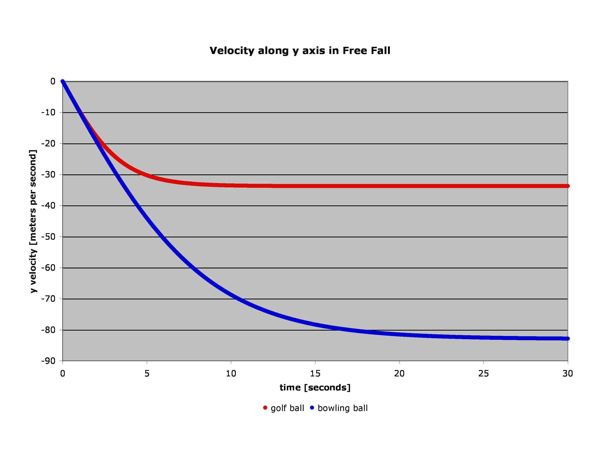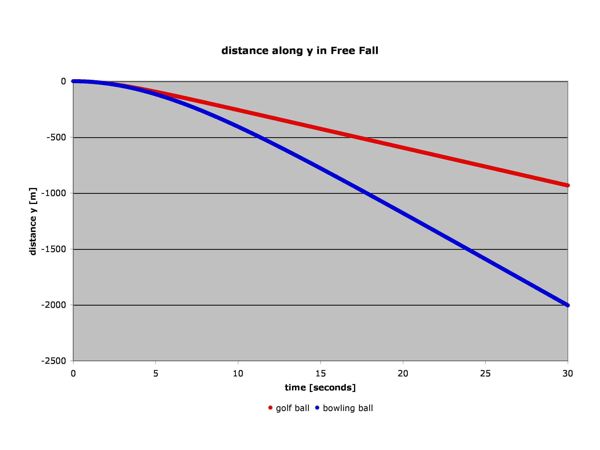
| MadSci Network: Physics |
The question: "If a golf and bowling ball were dropped from the sky which would hit first? A friend and I have a running argument on this one and were looking for the truth. I know that Newton's law says that both would hit at the same time but my question deals more with the aerodynamic aspect of this question. Since the turbulent flow caused by the dimples of the golf ball gives it an aerodynamic advantage would it in turn hit the ground first if dropped from a far enough distance? Even if by milli-seconds I would like to know which one would impact first and why."
There are several previous answers in our archives dealing with terminal
velocity, which I suggest you read. Use
our search engine (the
Google side) to search on "terminal velocity", including the quotation
marks. Here are several of the more pertinent previous answers:
gravity
questions answered
bb
terminal velocity
golf
ball versus tennis ball
At least one of the previous answers refers to a page on the Web that allows one to calculate the terminal velocity of spheres, knowing the weight and cross-sectional area. It is here at NASA.
I found the pertinent information about the specifications of golf balls at this site. There we find that a golf ball is supposed to be no more than 45.93 grams in mass and no smaller than 42.67 mm in diameter. Using the metric input dimensions at the calculator we input 0.04593 kg * 9.8 m/s2 = 0.450 N for the weight and .042672*PI/4 = 0.00143 m2 for the area, and we will use 0.45 for the drag coefficient. We find that the calculator indicates a terminal velocity of 33.8 m/s.
Specifications for bowling balls can be found at sites such as tripod.com. I have converted the English measures to metric: the mass of a bowling ball can be no more than 7.26 kg (no minimum mass is given!), and its diameter must be between 0.2159m and 0.2183m. So, using 71.1 N for the weight and 0.0374 m2 for the area we find the bowling ball's terminal velocity to be 83.1 m/s.
Using an Excel spreadsheet that I put together the terminal velocity of the golf ball will be found to be about 33.7 m/s, while the terminal velocity of a maximum-mass bowling ball will be about 82.8 m/s. (This is slightly different than the 83.1 m/s given by the calculator, but I think the difference is that the terminal velocity has not actually been reached yet in my spreadsheet. The total time for the calculations probably ought to be taken to 40 or 50 seconds.) Even a lighter bowling ball, say 5.44 kg (12 pounds) will have a terminal velocity of about 71.8 m/s. Clearly the bowling ball falls faster than the golf ball!
For those not having access to Microsoft Excel and the use of the spreadsheet above, the charts are shown below:


However, if the height from which the balls are released is not very high the differences will not be so obvious. For instance, if one examines the computed distance that each ball falls in one second, the golf ball falls 4.789 m and the bowling ball falls 4.843 m, a difference of only 0.054 m (54 mm). That may be discernible if you have good measuring equipment!
John Link, MadSci Physicist
Try the links in the MadSci Library for more information on Physics.